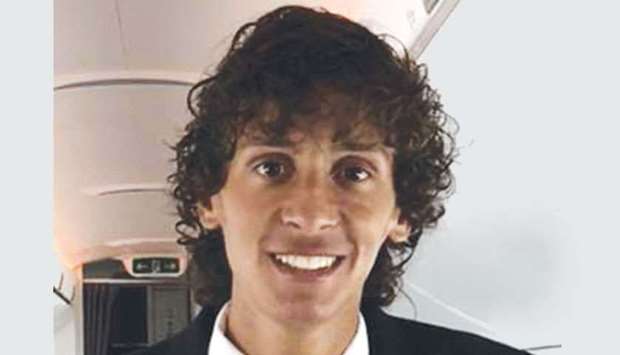I’m writing this week from Kuwait Air Show — the first international air show of the year in the aviation calendar, and a chance for the Middle East and North African carriers to demonstrate their latest innovations, new products, passenger experience offerings, and announce new partnerships.
It’s one of the only aviation events in the world where the Gulf is truly united despite various geopolitical disputes across the region. Here in Kuwait, Qatar Airways is showcasing their flagship A350-1000 aircraft with ‘QSuite’ — the best business class in the skies today. Emirates is present with the A380, an aircraft they will continue to take delivery of for another 15 months. Gulf Air and Etihad Airways are present with 787 Dreamliners, specifically highlighting the ‘eco-friendliness’ of the jet to visitors and spectators.
Boeing’s presence here at Kuwait Airshow has a focus on their global aviation industry services — with a quiet nod to the plane they are still trying to sell: Boeing 737 MAX — the jet that continues to be grounded worldwide.
While the Middle East airlines are known for their widebody jets, worldwide the aviation industry continues to move towards single-aisle jets.
Back in 2002, aviation entrepreneur and business tycoon Richard Branson proudly presented his — at the time — brand new Virgin Atlantic Airbus A340-600 to the world for the very first time. The aircraft featured a catch line on the fuselage that wouldn’t age very well: ‘4 engines 4 long haul.’ He proudly promoted this phrase on the basis that Virgin had found 18% of travellers would "go out of their way" to fly on four-engined aircraft. While industry executives would ridicule such a claim now almost 20 years later, this was at a time where Branson, like other airline CEOs, also believed “the A380 is the way of the future” — which we now know not to be the case, as some airlines are already scrapping the passenger-loved superjumbo jet due to its poor economics and heavy fuel consumption compared with other jets on the market.
In essence, as fast as the world’s airlines believed that ‘bigger is better’ when it comes to airline jets, they woke up to the fact that just the opposite mind-set is required when ordering aircraft — and it all comes down to one key factor: efficiency.
Efficiency is at the core of an airlines’ fleet strategy more than ever before, and as aircraft become more capable in terms of their overall efficiency, airlines are demanding increased levels of efficiency from both the aircraft manufactures, and the engine suppliers powering the jet. We’re currently at a period of the aviation cycle whereby airlines are demanding the efficiency and economics of a short-haul jet, on aircraft with capabilities of a long-haul jet.
It’s left Airbus and Boeing scrambling to introduce single-aisle, longer-range jets to cater to a market segment known as the ‘Middle of Market’ — often abbreviated as the “MoM’. This sweet spot area of the market is ultimately transforming the way we travel long-haul — as more airlines ditch gas-guzzling wide-body jets in favour of single-aisle, fuel efficient aircraft that are of a similar physical size as the aircraft we’d expect to fly on a 2-hour intra-Europe hop, and seat around 230 passengers.
Generally speaking, aircraft such as the Airbus A321LR (a longer-range variant of the A321neo) and Boeing 737 MAX 10 fit such a description. These are aircraft that are able to be used on routes that are essentially the short-haul end of long haul, flights that are up to 9 hours in flight time. The jets are helping airlines with both the fuel efficiency, and economic efficiency of flights that are not the ‘heaviest’ in terms of passenger demand, but still have a market to serve. In Asia, Philippine Airlines use the A321neo between Manila and Sydney, a route typically flown by widebody jets.
While it’s clear there’s a lot the airlines love about these type of jets — can the same be said for passengers? The most obvious concern from a passenger perspective as that many argue the same levels of comfort cannot be maintained on a single-aisle jet compared with a widebody jet, even if parameters such as seat pitch/width were kept the same. The ‘airy feeling’ and ‘sense of space’ associated with large aircraft such as A380s (which frequently operate 7-hour flights on several routes worldwide) means many passengers claim they feel more comfortable on larger jets, irrespective of the dimensions of their actual seat.
Furthermore, with airlines continuing to commit to single-aisle jets for long haul operations, the potential of social areas onboard, such as onboard bars, lounge spaces or relaxation areas… disappears. However, premium travellers, fear not — ‘suite’ seats, sliding doors, lie-flat beds and 1-1 configurations are all readily available to be installed onto aircraft such as the A321LR, but given the choice — passengers I polled are consistent with their feeling… one echoed by Branson in 2002, and by so many visitors that I’ve spoken with here at Kuwait Air Show: Bigger is better.
In many ways, it’s a mind-set switch that may be necessary. As we associate long-haul with 747s, or more recently with A380s and even A350s, perhaps we need to realise that 6-hour flights are relatively short in our connected world. While the smaller jets may feel the effects of turbulence slightly more so than a larger jet, the flight itself shouldn’t feel too different providing the same, or better levels of comfort are maintained.
n The author is an aviation analyst. Twitter handle: @AlexInAir

